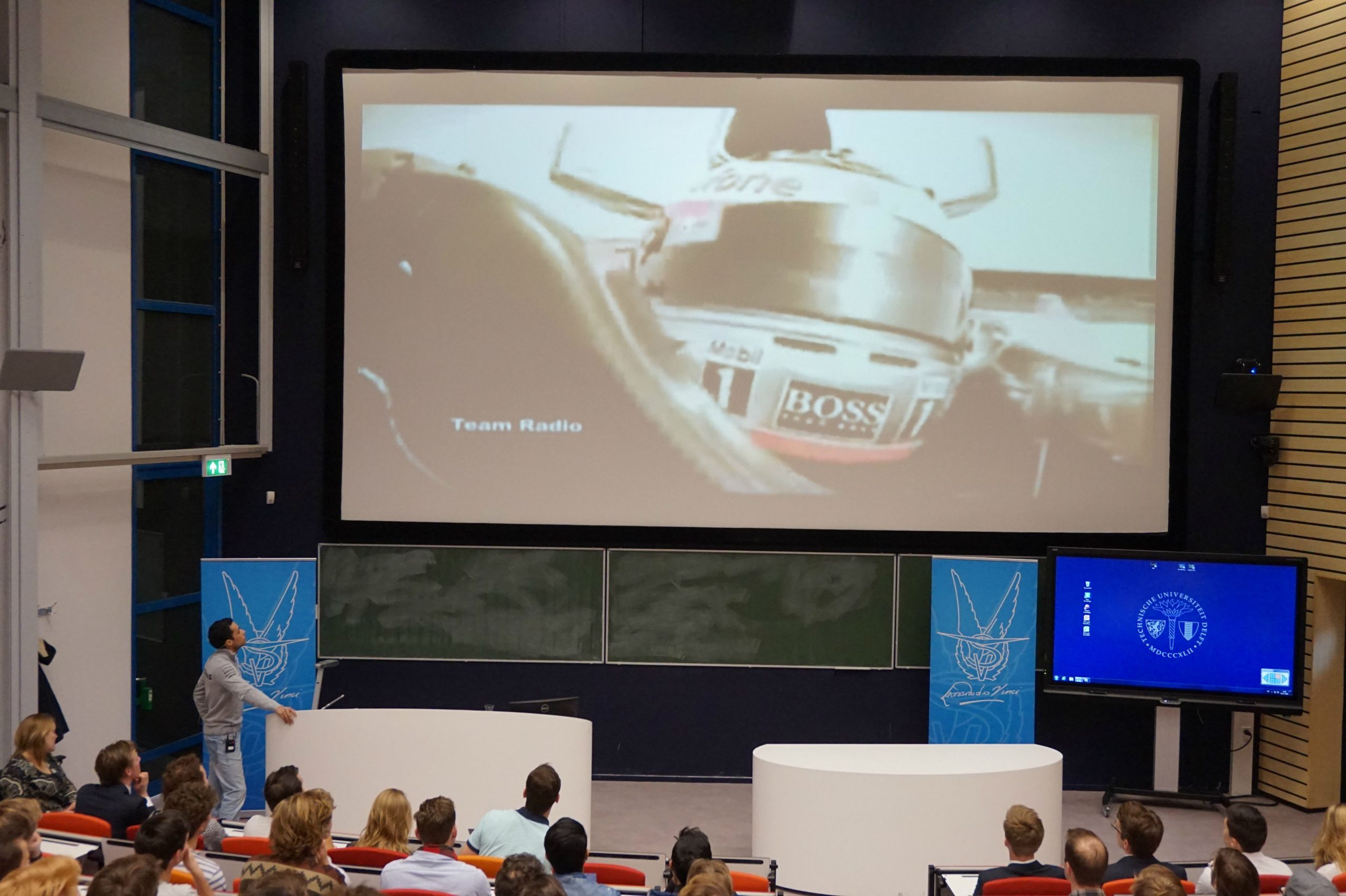Over a hundred enthusiastic students raced to Lecture Room A of the Faculty of Aerospace Engineering building on November 25, 2016. TU Delft alumnus Dr. Iliass Azijli gave a lecture on his experiences in the world of Formula One.
Dr. Azijli currently works as a CFD Engineer for the Mercedes AMG Petronas F1 team. Considered among the best in the league, the team has won the prestigious World Constructors’ Championship the last three seasons.
He’s just one of the 700 people involved with making the team a success in recent years. Dr. Azijli and his colleagues are based in a large facility located in Brackley, UK where they construct each vehicle and carefully analyse nearly every conceivable component. During his lecture, Dr. Azijli offered a look at what happens behind the scenes. Along with the thousands of hours of work that go into the cars themselves, a small army of individuals are devoted to attracting sponsors, helping the drivers train and making sure everyone gets to the starting line on time for races.
“It’s all like clockwork and it must work perfectly,” Dr. Azijli explained.
His lecture was also filled with fascinating details that might interest someone who has never even watched a Formula 1 race. The sheer cost of various components in the cars is astonishing. A steering wheel alone can come with a €47,000 price tag and an engine costs over €2 million to design, build, install and test. The drivers themselves must train as hard as many other professional athletes in order to withstand the G forces they encounter on the track.
“Drivers in the ’60s were hardly what you would call athletes,” Dr. Azijli said. “But the ones now definitely are. Their necks alone are enormous.”
But perhaps of most interest to the students assembled was what Dr. Azijli called ‘The Magic Formula for Success.’ Simply put, it’s aerodynamics. He described the team’s vehicles as ‘almost like upside down fighter jets’ while he discussed engineering objectives and methods of reducing drag while maintaining aero balance. But Dr. Azijli also noted an area too often overlooked by racing engineers: tires.
“They’re hard to master,” he said before explaining various tricks the team uses to test theirs. One even involves wrapping them in heated blankets.



Comments are closed.